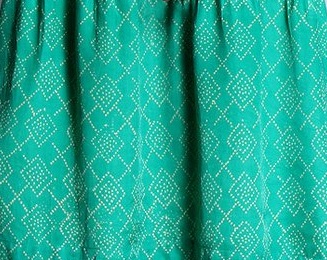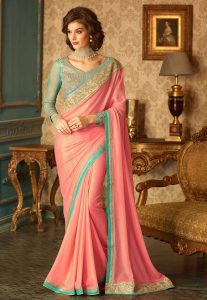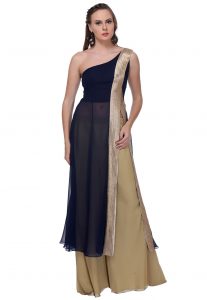Viscose Fabric
Viscose is an artificial chemical based yarn known for its elasticity and soft feel. It is used in extracting economical versions of many popular fabrics like Silk and Velvet. Fabrics like Rayon (also known as Viscose Rayon), Cellophane, Art Silk and Synthetic Velvet are all made from Viscose. It is commonly used in making Sarees, Kurtis, Jackets, and Dresses.
History and the Making
Hilaire de Chardonnet, a French scientist created this in the late 1800’s. He was also the person behind the creation of artificial Silk.
The process of creating it is fairly complex. In its natural wood pulp form, it undergoes a long process of chemical baths and treatment processes. The manufacturing of Viscose fiber starts with the reaction of the wood pulp with caustic soda. It is then left for a few hours to age and ripe, after which it is dissolved in more caustic soda to give a viscous yellow solution. Later, this solution undergoes acidic treatment where the cellulose is regenerated as fine strands of fiber. Finally, it is washed to remove any excessive acids, and is extracted to manufacture various threads and different byproducts.

Viscose Fabric
Various Uses
The most popular fabric extracted from Viscose is Rayon, which is used for many different textiles and clothing products. Rayon has a silky sheen and feel to it, yet it breathes like a cotton weave. Being an inexpensive and lightweight material, Rayon is widely used in manufacturing covers for table, bed sheets and furniture covers besides clothing. The draping property of Rayon is very good. Hence it is an ideal fabric to make curtains. The fiber dyes very easily and doesn’t shrink when heated. People can enjoy a luxurious feel with rayon fabric without spending much money.
Another use of this fabric is making cellophane. Some common uses of cellophane include kitchen wraps and clear sheets and adhesive tape. Besides the textile and fashion industry, it is extensively used in the industrial field, because of its stability in high temperatures.
Environmental Issue
The older process of its production causes a lot of pollution. The process is still used by a few companies creating toxic waste during its production. Some environmentally conscious manufacturers are making great efforts to ensure clean production of this fabric.
Maintenance
Rayon or Viscose clothing should always be dry cleaned and not machine/washed or dried. Try and follow the specific manufacturer’s instruction on the label. The fiber tends to wrinkle easily. It should not be kept in direct sunlight to dry. For ironing, use a low to medium setting with steam.
References
Categories: Textiles



